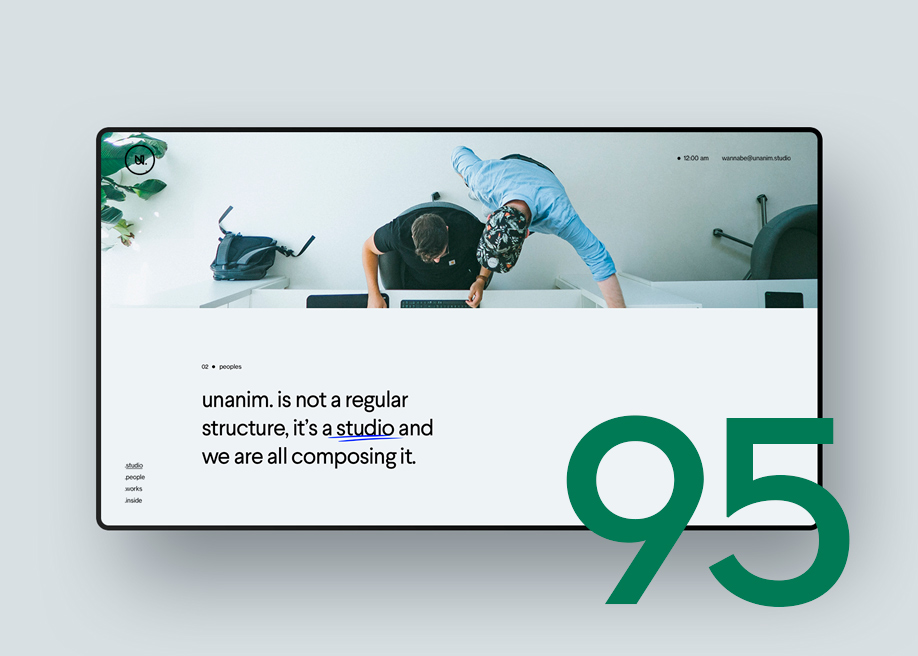The Relevance of Responsive Website Design for Company Success
In the modern organization environment, where digital interactions are vital, the value of receptive website design can not be overstated. This method not just improves customer experience throughout tools yet also plays a critical role in enhancing internet search engine presence and reducing operational costs. As consumer behavior increasingly favors mobile access, the effects for organizations are profound. However, comprehending the complete range of advantages and prospective risks connected with responsive design is necessary for making notified decisions that might influence overall success. Discovering these measurements exposes crucial insights that might reshape your digital method.
Advantages of Responsive Style

In addition, responsive design boosts seo (SEO) initiatives. Look engines, like Google, focus on mobile-friendly sites, which can cause improved rankings and boosted presence. This is vital as customers increasingly depend on search engines to find solutions and products.
One more substantial benefit is the broader reach it offers. A receptive internet site ensures that users on different gadgets-- be it smart devices, tablet computers, or desktop computers-- have a constant experience, consequently drawing in a broader target market. This flexibility cultivates brand name commitment, as customers are extra most likely to go back to a website that operates effortlessly throughout their liked gadgets.
Additionally, responsive layout streamlines analytics and reporting processes. With a solitary URL for all gadgets, businesses can efficiently track user actions and engagement, enabling data-driven decision-making. In recap, the advantages of receptive design expand beyond plain aesthetic appeals, supporting overall business success in an affordable electronic field.
Effect On User Experience
In today's electronic atmosphere, individuals anticipate smooth communications regardless of the tool they are making use of. Responsive website design plays a critical duty in satisfying this expectation by making certain that websites adjust fluidly to numerous screen resolutions, dimensions, and orientations. This flexibility substantially enhances customer experience, as it gets rid of the aggravation usually related to browsing non-responsive websites.
A well-implemented receptive style provides user-friendly navigating, making sure that customers can quickly access web content and functionality on desktop computers, smartphones, and tablets alike. By maintaining constant aesthetic aesthetics and functionality throughout tools, companies can produce a natural brand identification that cultivates trust and interaction. Responsive style decreases packing times and boosts efficiency, variables that are essential in retaining user attention and reducing bounce rates.
In addition, responsive sites are normally a lot more obtainable, dealing with the varied requirements of customers with varying capacities. This inclusivity not only broadens the prospective audience yet additionally improves consumer contentment. Inevitably, purchasing receptive web layout is not simply concerning aesthetics; it is a tactical decision targeted at optimizing user experience, which is important for driving conversions and attaining lasting service success.
SEO Advantages
As internet search engine increasingly prioritize individual experience in their ranking algorithms, the adoption of receptive web design ends up being a necessary component of efficient SEO method. Receptive website design makes sure that a site provides a regular and enhanced experience across different devices, which is essential as internet search engine evaluate customer interaction metrics such as bounce price and time on site.
A receptive style reduces the chance of duplicate web content, as it utilizes a solitary URL for both desktop computer and mobile versions. This consolidation can improve the website's authority and improve its exposure in search results. Google prefers receptive layouts, advising them visit this site for their ability to adjust to various display sizes and resolutions. This placement with online search engine ideal practices can bring about higher rankings.
In addition, responsive web style boosts web page loading rates, vital for search engine optimization performance. Fast-loading pages add to reduce bounce prices, therefore signifying to search engines that the content is appealing and pertinent. Inevitably, a well-implemented receptive internet layout not just improves the customer experience yet likewise dramatically reinforces a web site's search engine optimization efficiency, driving natural web traffic and promoting service development.
Mobile Traffic Trends
Tracking mobile website traffic fads exposes considerable shifts in just how customers engage with online web content, emphasizing the requirement for services to adjust their electronic approaches. Over the last few years, mobile phones have come to be the main means where customers access the internet, going beyond desktop use in lots of markets. This shift highlights the relevance of enhancing websites for mobile responsiveness, as an expanding portion of users anticipate seamless experiences throughout various tools.
Data indicates that mobile web traffic accounts for over fifty percent of all web website traffic worldwide, with this number remaining to climb. Users significantly depend on smart devices for immediate accessibility to details, frequently carrying out searches while on the move. Organizations need to focus on mobile-friendly layouts to cater to this audience, making certain fast loading times and simple navigation.
Moreover, mobile customers show distinctive habits, such as much shorter interest periods and a choice for aesthetically interesting content. Consequently, companies that overlook mobile optimization danger alienating possible customers and losing market share. Comprehending and responding to these mobile web traffic fads is not merely a tactical modification; it is a critical essential for services aiming for lasting success in a progressively digital landscape.
Cost-Effectiveness of Design
Optimizing for cost-effectiveness in website design can considerably enhance a business's profits while improving customer experience. Receptive website design (RWD) eliminates the demand for separate internet sites for various gadgets, lowering growth and upkeep expenses. By employing a single layout that adjusts to numerous screen dimensions, companies can allocate resources a lot more effectively, ultimately conserving time and money.
Furthermore, RWD promotes far better SEO methods, as search engines favor see mobile-friendly websites. This can bring about raised organic website traffic without the additional prices connected with pay-per-click view publisher site marketing. A well-optimized receptive website not only draws in more visitors yet additionally enhances interaction, reducing bounce prices and boosting conversion rates.
In addition, the long life of a responsive design suggests fewer redesigns are needed as new devices and display sizes arise. This forward-thinking financial investment defend against obsolescence while ensuring that the web site stays functional and aesthetically pleasing over time.

Verdict
In verdict, responsive web style plays a critical role in attaining organization success in the modern-day electronic landscape. Additionally, the cost-effectiveness of preserving a solitary platform even more emphasizes the strategic advantages of adopting responsive style.
A well-implemented receptive design offers user-friendly navigating, ensuring that customers can conveniently access material and functionality on desktop computers, tablets, and smart devices alike. Responsive style decreases loading times and improves performance, aspects that are essential in retaining customer attention and lessening bounce rates.
Inevitably, investing in receptive web design is not merely about aesthetic appeals; it is a calculated decision aimed at enhancing customer experience, which is crucial for driving conversions and achieving lasting business success.
Eventually, a well-implemented responsive web layout not only boosts the customer experience however additionally substantially bolsters a website's Search engine optimization efficiency, driving natural website traffic and promoting company growth. web design klerksdorp.
In conclusion, responsive web style plays a crucial role in accomplishing business success in the contemporary digital landscape.